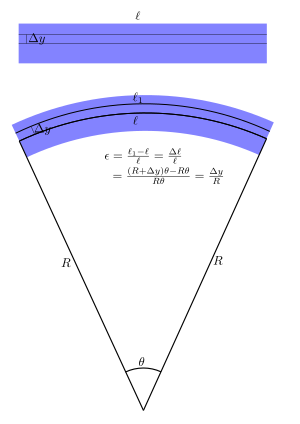Basics of Structural Analysis
Introduction
Structural analysis using about high school level physics and maths.
Aim to calculate fiberglass cansat structure
Basic theory
Principle of superposition: linearity. Displacement at location from forces and </math>P_2</math> located at different positions is calculated as
The energy principle: giving the total energy as which is called strain energy. For linear deformation this gives .
Virtual work principle.
Dead loads, live loads, impact loads (impact factor), wind loads.
Equilibrium.
Forces:
- Normal force and axial force (out-of-plane forces, in-plane forces)
- Shearing force . Thus we have . is the intensity of applied (normal?) force.
- Bending moment and thus .
- Torsion (of a plate)
- Curvature and twist
Hooke's law hold for linear elastic material: , where is the bending stress. The force is .
Plate
- Torsion (of a plate)
- Curvature and twist .
Curvature in the direction is the rate of change of the slope with respect to arch length, giving
Strains in a plate .
Von Kármán strains.
Beam
Forces:
- Normal force and axial force
- Shearing force . Thus we have . Failed to parse (SVG (MathML can be enabled via browser plugin): Invalid response ("Math extension cannot connect to Restbase.") from server "https://wikimedia.org/api/rest_v1/":): {\displaystyle w(x)} is the intensity of applied (normal?) force.
- Bending moment and thus Failed to parse (SVG (MathML can be enabled via browser plugin): Invalid response ("Math extension cannot connect to Restbase.") from server "https://wikimedia.org/api/rest_v1/":): {\displaystyle \frac{d^2M}{dx^2} = -w(x)} .
Deflection of beams

The strain in the filament is due to the different lengths of filaments in bended beam. which for linear elastic material (using Hooke's law) gives where is bending stress
Radius of curvature , and .
Column
Column is a vertical beam.
























